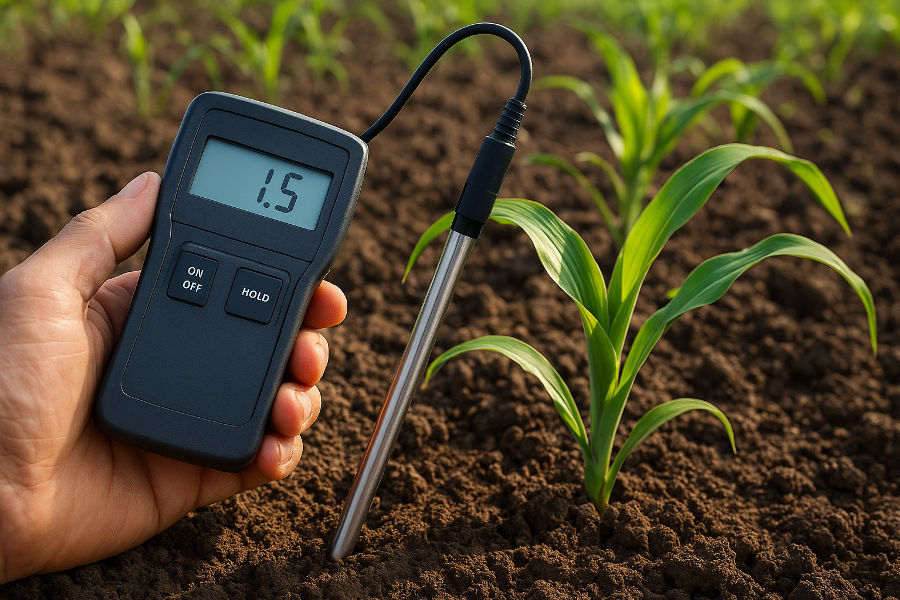Soil Electrical Conductivity (EC) — Reflection of Nutrition
Electrical Conductivity (EC) of soil refers to its ability to conduct electricity, which indicates the concentration of dissolved salts. When nutrients dissolve in water, they exist as ions that carry electrical current. Hence, higher EC means more dissolved salts and available nutrients in the soil.
EC reflects both soil fertility and salinity. Balanced EC represents balanced nutrition — neither excessive salts nor nutrient deficiency. For most crops, an EC range of 1.0 to 2.0 dS/m is considered ideal. Here, dS/m (decisiemens per meter) is the unit used to measure how well the salts in the soil can conduct electricity — the “electrical density” of soil salts.
Monitoring EC helps in precise fertilizer and irrigation management. The EC value reflects the combined effect of irrigation water, fertilizer usage, and natural soil salts. A high EC indicates salt accumulation that can hinder root growth, while low EC means poor nutrient availability. Hence, every farmer should test soil EC regularly to maintain nutrient balance.
In short, soil EC acts as the “electrical mirror” of the soil, showing its true nutrient and salt status. Maintaining an optimal EC ensures healthy plant growth and sustainable productivity.
